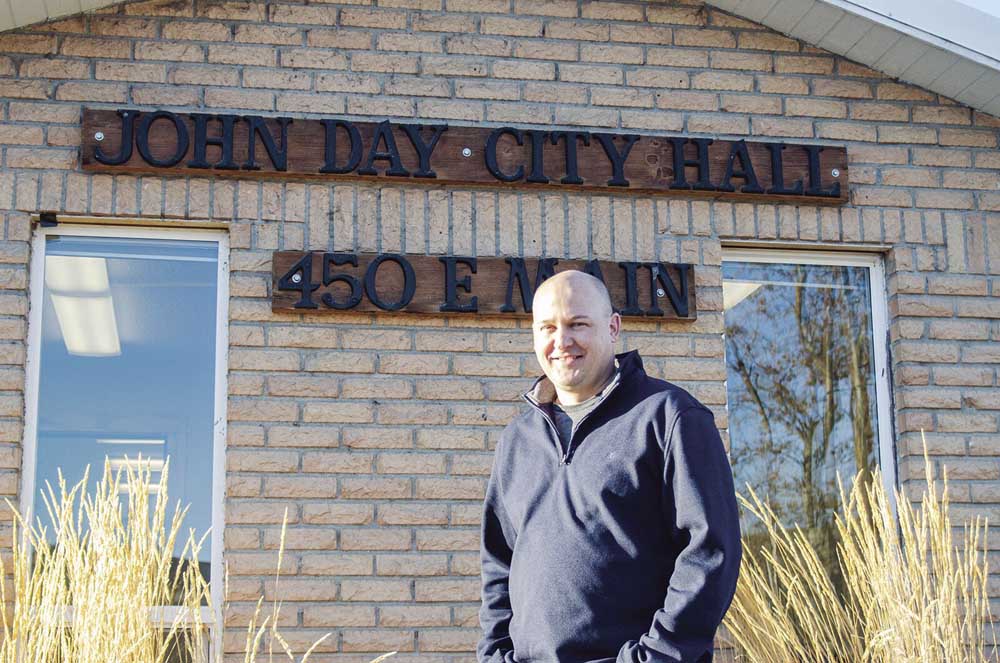Athletes of all ages benefit from high-intensity interval training
Published 12:00 am Friday, January 18, 2019

- Athletes of all ages benefit from high-intensity interval training
Michele Farneth swung a lightweight dumbbell in an arch between her knees and above her head for 40 arm-pumping seconds. Next, she clutched the weight to her chest and made a series of lunges. Afterward, she performed burpees, or quick push-ups followed by vertical leaps. By the time Farneth was done, she was gasping for air.
“It really increases your heart rate,” Farneth said.
This flurry of activity, which is interspersed with quick rest periods, takes up four minutes of Strength & Core, an hourlong strength and conditioning class at Juniper Swim & Fitness Center. Farneth was one of two dozen other participants, mostly older than 50, who kept their hearts thumping close to maximum capacity.
The technique is called high-intensity interval training, or HIIT. Others know it as the Tabata Method after pioneer kinesiologist Izumi Tabata. And it’s the exact kind of workout that Farneth, who’s 55 and a semiretired physical therapist, is after.
“You know you can do it,” she said. “You’ll be miserable, but (later) when you’re out there doing real-life things, like mountain biking or cross-country skiing, it’s like, ‘You got this. You know what this feeling is like.’”
Juniper Swim & Fitness Center also offers a spin class and a water exercise class that feature high-intensity components that last 20 to 30 minutes. The Athletic Club of Bend and the Bend Senior Center also incorporate high-intensity interval training into fitness classes.
High-intensity interval training has been a long-established method for competitive athletes to optimize their oxygen intake. More recently, however, experts have found that high-intensity interval training is a useful and fairly safe way for aging athletes to ward off heart disease, diabetes and stroke.
The technique is also catching on globally, according to a report by the American College of Sports Medicine. The organization polled more than 2,000 fitness professionals across the world who placed HIIT third among 39 potential fitness trends.
Fitness instructor Alli Jorgensen, 53, began incorporating the workout style into her conditioning class six months ago.
“The four minutes give them a taste of HIIT,” Jorgensen said. “It shows them they can breath hard, and they’re not going to die.”
Jorgensen wanted to show strength-training participants who shy from chest-pumping intensity workouts that they can reap health benefits in little time through high-intensity interval training. Experts see an improved VO2 max — or the maximum amount of oxygen a person can use during intense exercise — in less than three months of workouts. It’s recommended to mix one or two weekly workouts with other less-intense, sustained efforts.
“I have so many students who come back and say, ‘Now, if I go mountain biking, hiking or cross-country skiing, I totally feel the improvements in my cardiovascular system,’” Jorgensen said. “Or, ‘If I’m heading up a hill, and it’s mentally tough and I’m starting to talk my way out of it, I just remember: OK, what did we do in class? I can do this!’”
Though members of Jorgensen’s Strength & Core class enjoy high-intensity interval training, they struggled to verbalize their enthusiasm during a recent session.
“How’s it going out there?” Jorgensen called out while she and the class performed high-intensity calisthenics. No one replied. “Good. You’re right where I want you.”
High-intensity interval training, in which participants’ hearts pump 80 percent or more of their maximal rate, can be applied to a variety of exercises, including hard bursts on the running trail, a stationary bike, water exercises or calisthenics, as in Jorgensen’s class.
HIIT has been practiced by competitive athletes for more than 100 years, according to a 2018 report written by Dr. Martin Gibala, a leading advocate of high-intensity interval training and a professor of kinesiology at McMaster University in Canada. But in the past 10 to 15 years, there has been a renewed interest in the workout style as a way to promote heart and lung health in a wider range of people, even seniors, according to Gibala. Plus, quick intensity bursts punctuated by short rest periods have been shown to promote the same health benefits as traditional, more time-consuming “moderate-intensity continuous training.” After six to 12 weeks of HIIT workouts, the possibility of a cardiovascular event, such as a heart attack or stroke, is reduced by a rate of 10 to 30 percent, according to Gibala’s report.
High-intensity interval training is safe, too, according to a 2012 Norwegian study that examined more than 4,800 high-intensity and moderate-intensity workout participants with coronary heart disease. After the group’s total of more than 175,000 hours of both kinds of exercise, only one person suffered a fatal heart attack during moderate intensity activity (more than 129,000 hours) and two people experienced nondeadly heart attacks during high-intensity interval training (more than 46,000 hours). Those are pretty safe rates, Martin concluded.
Thumping hearts and pumping lungs didn’t bother the recent class at Juniper Swim & Fitness Center. Afterward, participants flung towels over shoulders while they caught their breath and shook out their limbs.
“It’s fatiguing and scary,” said Farneth, who has attended the twice-weekly class on-and-off for a decade. Along with an endorphin rush that follows each high-intensity interval training session, Farneth noticed a longer-lasting boost in strength and endurance about a month after beginning the workouts when she went biking and nordic skiing. “I always keeps the benefits (of HIIT) in mind, even though it’s uncomfortable.”
Pat Joslin was also up for the challenge.
“I rather enjoy it, even though I get out of breath,” Joslin said after the class.
Jorgensen said the workout is a beneficial and simple element to incorporate into a fitness routine because it’s easy to do on the fly.
“You don’t need a trainer or instructor to do it,” Jorgensen said. “You can just say, ‘well, I’m going to sprint to the next tree.’ Anybody can do it.”
Connie Newport, 67, has taken Jorgensen’s class for almost 10 years.
“A lot of us have been in this class for years, and you get to a point where you need to be pushed, or you come to understand you’re capable of doing more,” Newport said. “(HIIT) has certainly done that. I think everybody likes it — I mean, you like it when it’s over, certainly. We’re all older, but we’ve come to (the realization) that yeah, we need (HIIT). It’s good for us.”
— Reporter: 541-617-7816, pmadsen@bendbulletin.com





